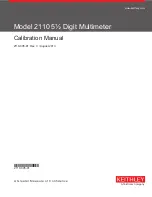
10
Chapter 1 - Introduction & Description
1.3
Background
Any data communications environment that has more than one
asynchronous line going between common locations can probably
benefit by installing a pair of statistical multiplexers (stat muxes). A stat
mux performs the function of combining several asynchronous data
communication channels into one composite signal that can be
transmitted between two locations more inexpensively than the cost of
the individual lines.
Figure 1-2 shows a simple communications network. Individual users
connect to asynchronous channels and the composite (or aggregate)
communications line between the two locations is the "link". Link
protocol is the communications discipline used between the two
multiplexers and typically operates at a speed higher than the individual
asynchronous units connected to each multiplexer.
Figure 1-2. Simple Communications Network
One reason that a stat mux works is that typically an asynchronous
terminal device is not used to its capacity. Studies show that as little as
10 to 15% utilization of such lines is a common occurrence. These
percentages indicate that the most efficient combination of lines in a
muxed asynchronous environment is between four and eight lines.
Although the primary reason for installing a mux is to save on
communications costs, two other benefits are also present. One is the
inherent error correction existing in muxed data and the other is data
security. Since a mux functions by taking individual asynchronous data
and transmitting it as data packets, there is an error detection and
retransmission scheme built in. Error correction is so vital in many
transmission types, such as graphic data and program transmission, that
many muxes are used mainly for their error correction capabilities.
The other benefit is data security which is achieved by the fact that the
individual data streams are encrypted into a single communication line
Summary of Contents for MMH900
Page 1: ...MMH900 Series Statistical Multiplexer User Guide...
Page 7: ...Chapter 1 Introduction Description...
Page 26: ...Chapter 2 Configuration...
Page 33: ...Chapter 3 Front Rear Panel Descriptions...
Page 44: ...Chapter 4 Installation...
Page 51: ...Chapter 5 Commands...
Page 89: ...Chapter 6 Operating Procedures...
Page 96: ...Chapter 7 Troubleshooting...
Page 111: ...Chapter 8 Service Warranty Technical Support...
Page 116: ...Appendices...
Page 184: ...Glossary...
Page 193: ...Glossary 193 X Y Z...
Page 200: ...S000315A...











































